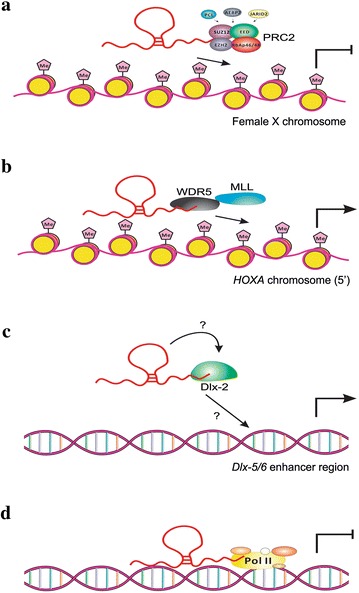Fig. 1.

Schematic representation of how lncRNAs may function in genome regulation. a The participation of lncRNA XIST in chromosome silencing. XIST recruits PRC2 to the female X chromosome, leading to H3K27me3 formation (presented as pink pentagon with “Me”) and silencing of the chromosome. b Chromatin modification by lncRNA HOTTIP. HOTTIP interacts with adaptor protein WDR5 and targets WDR5/MLL complexes, inducing H3K4me3 (presented as a pink pentagon with “Me”) and transcription of 5′HOXA genes. c Evf-2 as an example of lncRNAs that facilitate transcriptional activation. Combination of Evf-2 with the protein Dlx-2 forms an Evf-2/Dlx-2 complex, which targets the Dlx-5/6 enhancer region and promotes transcription. Question marks indicate that the specific role of Evf-2 in the process remains to be elucidated. d Alu ncRNA can act as a potent transcriptional repressor. Alu RNA contains RNA polymerase II (Pol II, enzyme that synthesizes mRNAs in eukaryotes) binding arms and modular repression domains, allowing it to bind Pol II and block RNA synthesis
